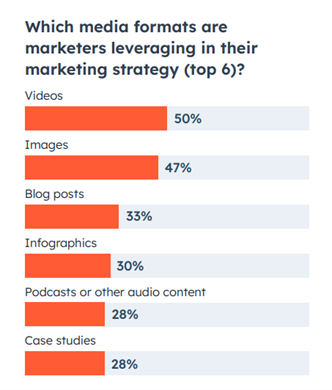Establishing credibility and building trust with customers can make a brand. Don’t you prefer to buy from brands that you feel are authorities and trust completely?
Credibility and trust come down to more than social media posts or a slick website (though they certainly help). You need to look at your whole customer journey and the customer experience (CX) touchpoints that make it up.
To help you with this, our guide covers 11 essential CX touchpoints with actionable tips on how to improve them.
What are CX Touchpoints?

Source: success.qualtrics.com
Customer experience touchpoints are the interactions and encounters a customer has with your brand. These touchpoints can occur at different stages, from initial awareness of your brand to purchase and post-purchase, and can be through various channels, both online and offline.
You may already be focusing your customer service efforts on your personal selling or support line, but CX touchpoints help you cover the entire customer journey. Effective management of CX touchpoints is crucial for building positive relationships and ensuring customer satisfaction.
11 CX Touchpoints and How to Improve Them
Now that we understand what CX touchpoints are, let’s uncover 11 of them and discuss how we can improve them.
1. Website

Source: mckinsey.com
Have you ever considered buying a product but been put off by an unprofessional or difficult-to-navigate website?
Your website is often the first interaction customers have with your brand. A professional and user-friendly website will quickly establish credibility.
Your website should be easy to navigate and mobile-friendly and always contain clear and accurate information about your products or services.
What’s more, make sure your online payment system is simple and functional. Including customer testimonials and case studies can also further build trust, so don’t be afraid to showcase these.
💡 Tip: Implement a live chat feature. A live chat option allows customers to get immediate assistance — that means reduced frustration and increased satisfaction. It also provides a human touch to your digital presence, making the interaction more personal and trustworthy.
2. Social Media
It’ll come as no surprise to you that social media platforms are powerful tools for engaging with customers.
Regularly posting valuable content and responding to comments both enhance your brand’s credibility. Authenticity is key; share behind-the-scenes looks and real customer stories while always foregrounding your core company values to build a genuine connection with your followers.
💡 Tip: Schedule regular Q&A sessions. Hosting live Q&A sessions on platforms like Instagram or Facebook allows customers to interact directly with your brand. This transparency builds trust and demonstrates your willingness to engage and address customer concerns openly.
3. Customer Service

Source: intercom.com
Your customer service team is yet another critical touchpoint for establishing that all-important trust. How many brands have you been put off for life because of a bad experience with their customer service reps?
Whether via phone, email or chat, providing prompt and helpful support shows customers you value their business.
Train your customer service team to resolve issues efficiently and empathetically, turning potential negative experiences into positive ones.
💡 Tip: Implement a customer feedback loop. Actively seeking and implementing customer feedback shows that you value their input. Use surveys or follow-up emails to gather feedback, and then share on social media or email marketing how you’re using that feedback to improve your products or services.
4. In-Store Experience
If your business has a physical location, the in-store experience is as important as your online presence. It’s the physical CX touchpoint and the final hurdle for converting potential customers.
Obviously, you need to ensure your store is clean and well-organized. It should be easy to navigate with attractive displays.
But the in-store experience is about more than meeting customer expectations, you need to exceed them. Your store should be staffed with employees who are well-trained and knowledgeable—and, of course, friendly. A positive in-store experience where customers feel welcomed and assisted builds immediate trust and encourages repeat visits.
💡 Tip: Train staff on personalized service. Equip your employees with the skills to recognize and respond to individual customer needs. Personalized service makes customers feel valued and understood, and it improves their overall in-store experience.
5. Email Marketing
Email marketing allows for personalized communication with your customers, even when you can’t chat with them face-to-face. But our inboxes are easily cluttered with promo codes and sale reminders, so why should a customer open your marketing emails?
Sending tailored messages that cater to your customers’ interests and needs shows that you understand and value them. You should include useful content that demonstrates your expertise and branding clearly.
💡 Tip: Use segmentation to tailor messages. Segmenting your email list based on customer behavior and preferences will help you to send more relevant and personalized content, such as abandoned cart emails. This targeted approach can increase engagement and trust as customers feel cared for on a personal level.
6. Content Marketing

Source: hubspot.com
Publishing high-quality content, such as blogs and videos, positions your brand as an authority in your industry. Content marketing is essential for building credibility.
This is because providing valuable information without a hard sell builds trust and shows off your expertise. For example, if you run a telecommunications business, creating a guide on how to use a VoIP IP phone system is both useful and relevant to your target customer.
Of course, it’s essential that you ensure your content is accurate. Do your research, and remember to make it engaging.
💡 Tip: Publish case studies. Case studies can provide detailed examples of how your product or service has successfully solved problems for other customers. This real-world evidence is a great way to build credibility while publishing original, useful content.
7. Sales Representatives
Sales reps are a direct and highly effective touchpoint between your customer and your brand. Whether cold-calling customers from a B2B contact database or following up with previous purchasers, sales reps are often the face (or voice) of your customer experience.
Sales reps have the opportunity to build personal relationships and address individual concerns in real-time—much quicker than an FAQ page or a self-service portal. This personalized approach fosters customer trust and credibility, as customers feel heard and valued.
💡 Tip: Develop a relationship-building strategy. Encourage your sales team to focus on building long-term relationships rather than just making a sale. This involves understanding customer needs and following up regularly.
8. Online Reviews and Testimonials
Online reviews and testimonials are incredibly important trust signals.
Encourage satisfied customers to leave positive reviews on platforms like Google and Trustpilot. Make sure you respond to reviews—both positive and negative—in a professional manner to show that you value feedback and are committed to improvement.
💡 Tip: Respond to all reviews promptly. Whether the review is positive or negative, responding quickly and professionally shows that you value customer feedback and want to address their concerns proactively. This responsiveness builds trust.
9. Customer Loyalty Programs

Source: s3.amazonaws.com
Implementing a loyalty program or referral program rewards repeat customers and those who recommend you to friends.
These programs should offer exclusive benefits and discounts or early access to new products. Doing this helps you show appreciation for customer loyalty, ultimately reinforcing trust and encouraging ongoing engagement with your brand.
💡 Tip: Personalize rewards. Offer personalized rewards based on customer purchase history or preferences. This personal touch shows customers that you recognize and appreciate their individual loyalty and will strengthen their connection to your brand.
10. Post-Purchase Follow-Up
It might sound old-fashioned, but following up with customers after a purchase shows that you care about their satisfaction.
Whether through a thank-you email or a follow-up call, this touchpoint provides an opportunity to address any issues and gather valuable feedback. It also leaves a positive, lasting impression.
💡 Tip: Send a personalized thank-you note. A handwritten or personalized digital thank-you note adds a special touch to the post-purchase experience. It shows genuine appreciation and reinforces a positive impression of your brand.
11. Community Engagement
Our final CX touchpoint that can improve your business’s credibility is participating in community events and supporting local causes. You can interact with current and potential customers and showcase your activism online.
Being active in the community shows that your brand is responsible and committed to making a positive impact. This often resonates with customers on a personal level. Customers increasingly want to see socially responsible brands, and the more specific and local your efforts, the better.
💡 Tip: Highlight your community efforts. Share stories and photos of your community involvement on your website and social media channels. This transparency about your social responsibility efforts can build trust with customers who value community engagement.
Final Thoughts: Map Your CX Touchpoints
Every interaction, whether through your website and social media or your customer service and sales reps, is an opportunity to build trust and demonstrate your commitment to customer satisfaction.
You should map out the above CX touchpoints, create a customer journey, and strategize from there. And if you implement the actionable tips provided above for each touchpoint, you can improve the overall customer experience and stand out amongst the crowd.
About Author
Lucas Rossi – Growth Marketing Manager
Lucas Rossi is a Growth Marketing Manager at Dealfront, the go-to platform for giving sales and marketing teams the data to close deals in Europe. Lucas plays a key role in refining Dealfront’s data-driven approach to decision-making, leading to better lead quality and sales results. Lucas’ approach has advanced Dealfront’s marketing position and put it at the forefront of growth marketing.





